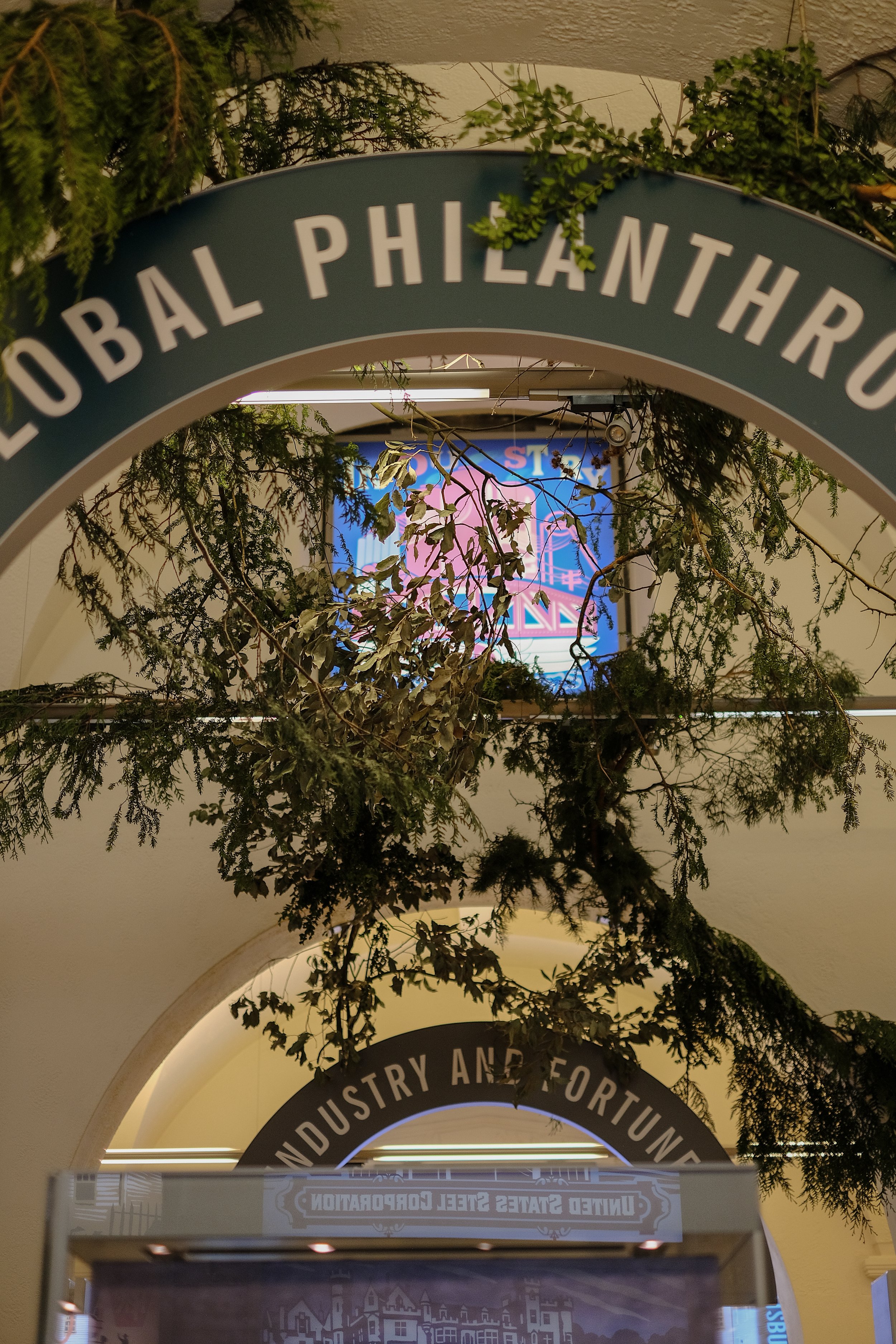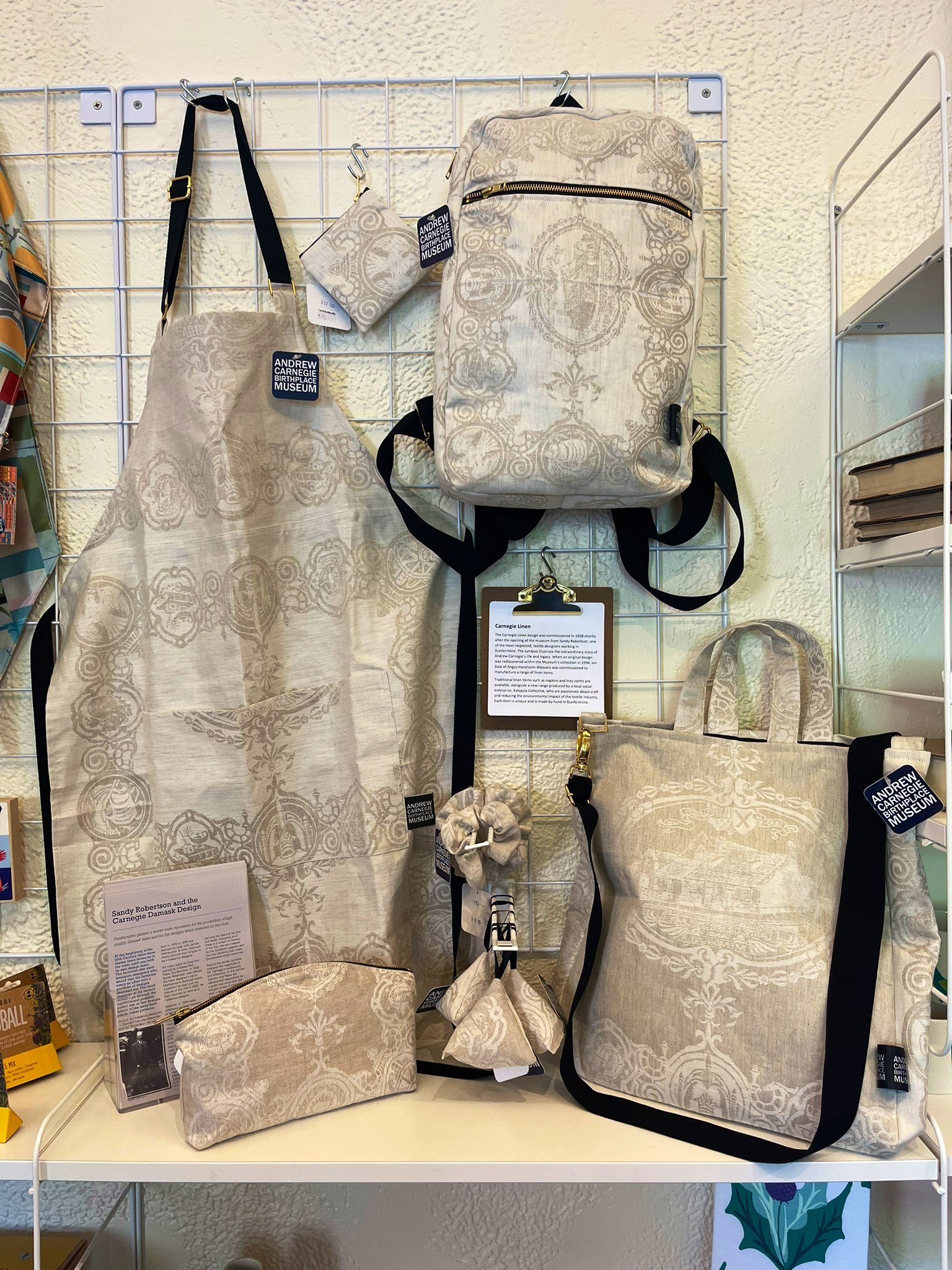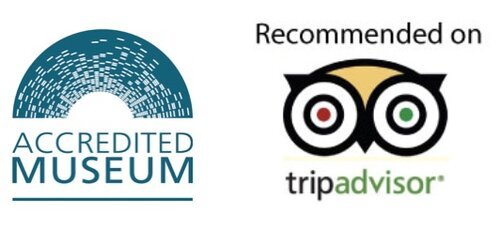The museum is currently playing host to magical installation, foraged from Andrew Carnegie’s greatest gift to Dunfermline, Pittencrieff Park, installed by local artist, Natasha Bell.
Natasha is an ethical florist, whose mission is to run a sustainable, ethical floristry business by foraging, reusing, and recycling and by only using seasonal, local materials. She uses fallen branches and trees where possible, but if cutting is needed, she cuts plants mindfully to encourage growth. This approach resonated with the gardening team in Pittencrieff Park, who work tirelessly to preserve the park for the people of Dunfermline.
Images showing Natasha and her colleague, Ebony, foraging in the Glen and working in the museum
It was Andrew Carnegie’s hope that, by transferring the ownership of the Glen to the Carnegie Dunfermline Trust, the Trustees would be able to bring “sweetness and light” to the people of Dunfermline. Every year, the Park is enjoyed by over 1.5million visitors, who come to enjoy Carnegie’s gift
Natasha’s installation will remain the museum for the next few months. As the leaves dry and fall ,the installation will change in its feel and atmosphere, just like the changing seasons of the Park.
The museum is open 11-4 daily, free admission
Details from the installation in the Museum, March 2024



































